| social mental environmental | ||
  |
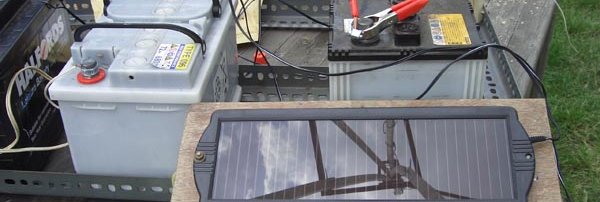 Solar Panels power the batteries for wireless Silver Surfers event at the Manor Gardens, London
|
  |
Documentation from the talks and excursions as well as reading material is to be found below. . Excursions: Monday 30th of July Bürgerpark Laskerwiesen/workstation ideenwerkstatt Berlin e. V. Laskerstr. 6-8. The City Park Laskerwiesen is a community garden and a community park. It was initiated by neighbors in collaboration with workstation ideenwerkstatt Berlin e. V. that resides right next to it and came into being in 2006. The park and garden were funded by a newly build supermarket as compensation for the loss of public land. The community garden scheme seems to cater to the tight schedules of city dwellers, with their need to stay flexible at all times. The smaller plot size of about 10 square meter – easily maintained by the plot neighbor, if one is away, also guarantees smooth transitions, when plot users change. The garden as well as the park are both maintained as public area by the neighbors who are part of the garden collective. Therefore they don’t have to pay any rent to the city.Read more here (in German only) Neighborhood garden Rosa Rose, Kinzigstr. 9 www.rosarose-garten.net Fauke Hehl, one of the initiators, talks about the community garden Rosa Rose which is situated on a piece of waste land in the center of Friedrichshain. Because of complex ownership issues the land couldn’t be “developed” yet. Inhabitants of the housing coop form next door started this garden with people form the neighborhood by cleaning the plot – which had been used as illegal garbage dump before. It now serves as public space for the whole neighborhood. Half of the plot is used as dog area. The other half is used partly as community garden and multiple-use-area for events like festivals, film screenings and workshops. Mural: Stop deportation of refugees 32.000 deportations each year in Germany 1,5 Million people are forced into illegality In their home countries they have to face persecution, rape, torture, war, poverty, hunger, death. Ground water well in the making. Tuesday 31st of July Inter cultural Garden Neukölln Columbiadamm next to Tempelhof airport. The garden is placed in between a Mosque and Tempelhof Airport in the southern part of Berlin. The term Intercultural Garden thus seems fitting also in a urbanist sense. Above a "raisin bomber" that during Cold War was part of the air brigade that flew food into West Berlin. While in those days the air lifting of food seemed like a frivolous yet heroic act, born out of Cold War necessities, today we still maintain this practice as if we simply forgot that this state of emergency is over. The gravestones of abrogated graves lying about in the intercultural garden Neukölln – left over from a time when it still served as stonemason workshop – were transported to Sparwasser HQ for the time of the show. The intercultural Garden movement is fast growing and there is now in all of Germany 60-80 gardens and in Berlin alone approximately 10-15 gardens. Again these gardens are basically public. For many also immigrants this works as a good setting for meeting a variety of people and gives an opportunity for working together and exchange. The term intercultural is thought of not only in terms of exchange between ethnicities but also as a part of a wider cultural exchange. See more on this specific garden and other intercultural gardens on the website: www.stiftung-interkultur.de Discussions at the intercultural garden Neukölln. Thursday 2st of August Children’s farm (Kinderbauernhof) Adalbertstraße , (corner Bethaniendamm) U8 Kottbusser Tor Sheep walking around, table tennis and water tank at the Children's farm. Solar driven water fountain in the back Ulrike Solbrig explains about the history of the place, and about how neighbors and activists have been fighting for this place trough many years. Download a PDF explaining more here Bethaniendamm, Engelbecken For a long period this had been an extraordinary piece of wild nature. Used by local initiatives as recreation area, as garden, to collect food for the animals of the nearby children farm and to study wild herbs by the nearby healing house, a school for holistic practitioners. The original park had been designed by Erwin Barth one of those reformers of the 20’s who wanted to build a recreational area for the, at that time, densely populated working class neighborhood of Kreuzberg at the border to Mitte. The park had stated out as abandoned water way. Barth let the park be build in the bed of the former water way. He fancied the idea that people should get the opportunity for active engagement in parks. The Engelbecken, the former harbor, was supposed to be turned into a public swimming pool – heated by the exhaust heat from a nearby ice factory and framed by palm trees. Even though his visionary plans could not be fully carried out at the time. The resulting park then was still more visionary then what the landscape architects of today did when they “recreated” the park in an stiff and uninspired mode in 2005. The place has been “cleaned up” and has retained non of its original charm and multiple uses. The space now needs a lot of maintenance, while before it had been maintained by people from the neighborhood for free. Also one should mention that this area was placed between the wall. Nowadays nobody seems to know the fact that the wall actually had two parts. A west part and an east part and in between the east German soldiers were patrolling. Turkish vegetable garden Bethaniendamm Starting out as a vegetable garden and then an additional shed. The house was placed on a tiny part of land that technically belonged to East Berlin but was located outside the wall in West Berlin. Trough negotiation with both east and west the owner managed to keep it there. He was obliged to keep it low enough that one could look over the wall. In the confusion of the reunification he quickly built a second story on the house – which is how it is today. The original owner is still inhabiting the house and tending the garden. Community Garden on the Park deck Zentrum Kreuzberg (Kottbusser Damm)  info coming up  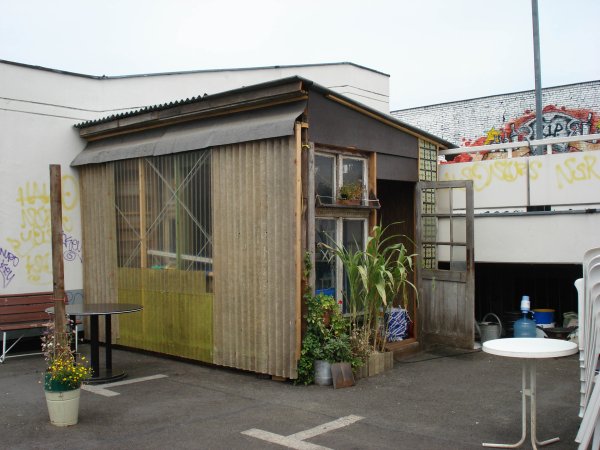 Wildflower bed project Reichengbergerstraße 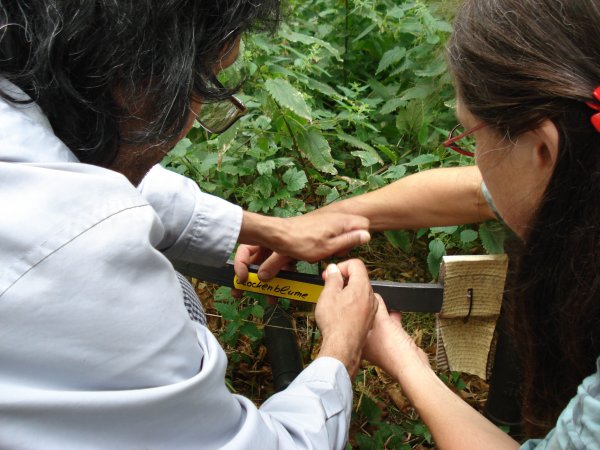 Wildflower bed project Reichengbergerstraße: Dorothe Gerhardi has managed to establish a wild flower project situated in the city flower beds around the trees of Reichenbergerstraße. The city even subsidized her at times with money for plants - but the communication with the people who maintain the cities flower beds has proove quite difficult over the time. She has tended the beds with the help of the neighbors.  Wagenburg Lohmühle 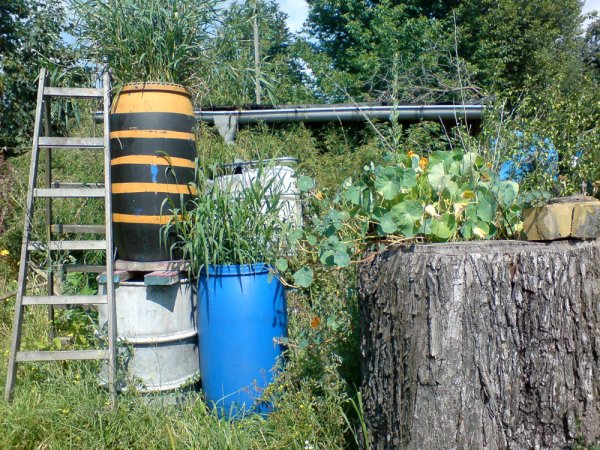 info coming up 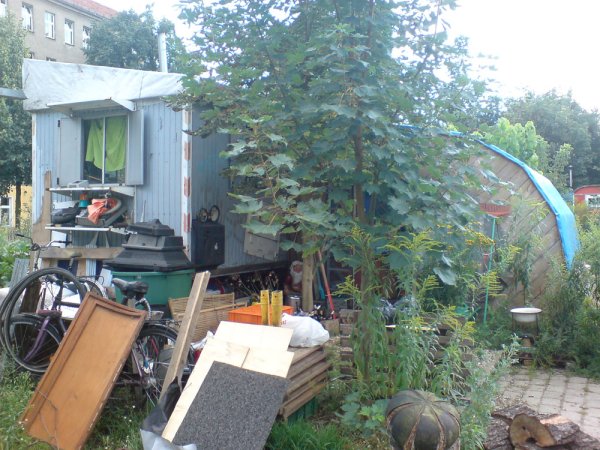   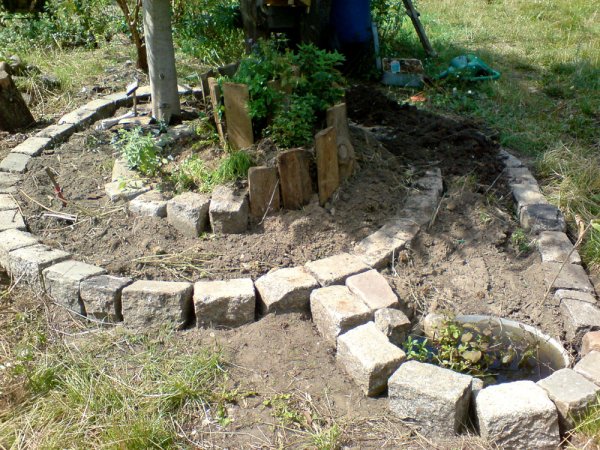 Intercultural Garden Friedrichhain Kreuzberg, Discursive Picnic w. potato talk by Åsa Sonjasdotter We ended the day in the Kreuzberg intercultural garden, with freshly dug up potatoes from Åsa’s plantations . This garden is made by initiative by a group of artists and activists. They started looking for land and were then contacted by the adjacent school who offered them a plot as a way to obey the Berlin law that schoolyards should be publicly accessible. Texts By or of participants PUBLIC LIFE : vanguardism in the age of casualised labour, the information economy and extra-cultural communities Siraj Izhar 2004 Catch 22: The Alchemy of Regeneration Siraj Izhar 2004 Boel Christensen-Scheel´s essay The Three Ecologies (about the Sørfinnet School) Other texts Maria Mies_The Subsistence Perspective.rtf Info on the movement to save the trees at the Landwehrkanal An essay on Emergy by Howard Odum who is an early important figure for getting government agencies to think about ecology http://www.mnforsustain.org http://www.edge.org/documents Ivan Illich, Energy and Equity. http://www.cogsci.ed.ac.uk/ War on Want on the informal economy. Just download the pdfs from http://www.waronwant.org/?lid |
||